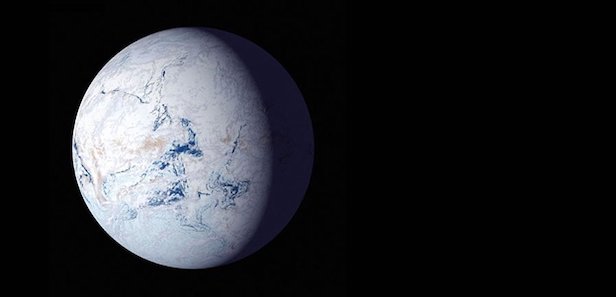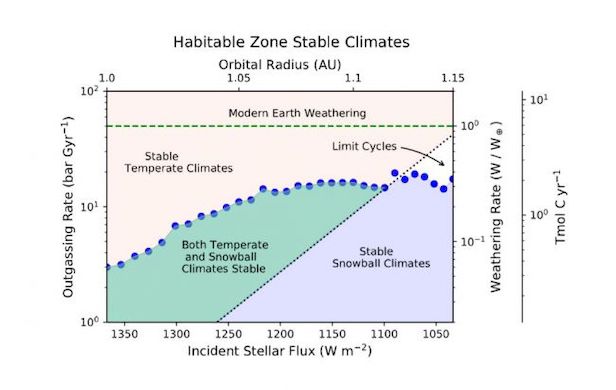‘Snowball’ planets might be better abodes for life than we thought
Frozen worlds could still have patches of habitable land

An artist’s impression of a “snowball Earth.” Image credit: NASA
Frozen alien worlds might be capable of supporting a greater diversity and complexity of life than previously thought, a new study suggests.
Researchers already knew that life can persist on frigid “snowball” planets, which sport sea ice all the way down to their equators. After all, this happened on Earth, which has gone through several snowball phases during its long history.
“But all of our life was in our oceans at that time,” study lead author Adiv Paradise, an astronomer and physicist at the University of Toronto, said in a statement. “There’s nothing about the land.”
The new study addresses this knowledge gap. Paradise and his colleagues performed thousands of 3D computer simulations, modelling the climates of theoretical snowball planets with a wide variety of continent configurations, stellar energy inputs and carbon-dioxide levels (CO2).
CO2 is a particularly important variable for modellers, since the concentration of this heat-trapping gas is one of the biggest climate drivers on a planet. We’re seeing that on Earth today, where temperatures are rising at an alarming rate because we’re pumping huge amounts of CO2 into the atmosphere.
When there’s not enough CO2 in the air, on the other hand, a planet can go snowball. Rainfall and erosion can make this happen, geologists think: Water reacts with CO2, generating carbonic acid, which then reacts with rocks and gets bound up in minerals. These minerals eventually make their way to the ocean, where they’re locked up on the seafloor.

This graph shows the relationship between carbon dioxide produced by volcanic activity and carbon dioxide removed from rainfall and erosion for temperate and snowball climates. Planets become stuck in a snowball state when volcanic activity and weathering rates balance each other out. Image credit: AGU
But this process doesn’t necessarily exclude the possibility of terrestrial life, the researchers found. Some of their modelled snowball worlds featured patches of potentially habitable land – specifically, inland areas near the equator, which in some cases sported temperatures above 10 degrees Celsius (50 degrees Fahrenheit).
“You have these planets that traditionally you might consider not habitable, and this suggests that maybe they can be,” Paradise said.
The team’s work offers other insights about snowball worlds and planetary habitability as well. For example, volcanic eruptions can jolt a planet out of a snowball state, by blasting lots of CO2 and other greenhouse gases into the atmosphere. But this doesn’t always happen, the new study suggests; the researchers’ simulations found that erosion can balance out volcanoes’ CO2 production.
So the distinction between worlds that can and can’t support life as we know it probably isn’t as clear as researchers had thought, study team members said.
“What we find is, actually, that line is a bit fuzzy,” Paradise said.
The new study was published 18 July 2019 in the Journal of Geophysical Research: Planets.
Keep up to date with the latest news in All About Space – available every month for just £4.99. Alternatively you can subscribe here for a fraction of the price!




